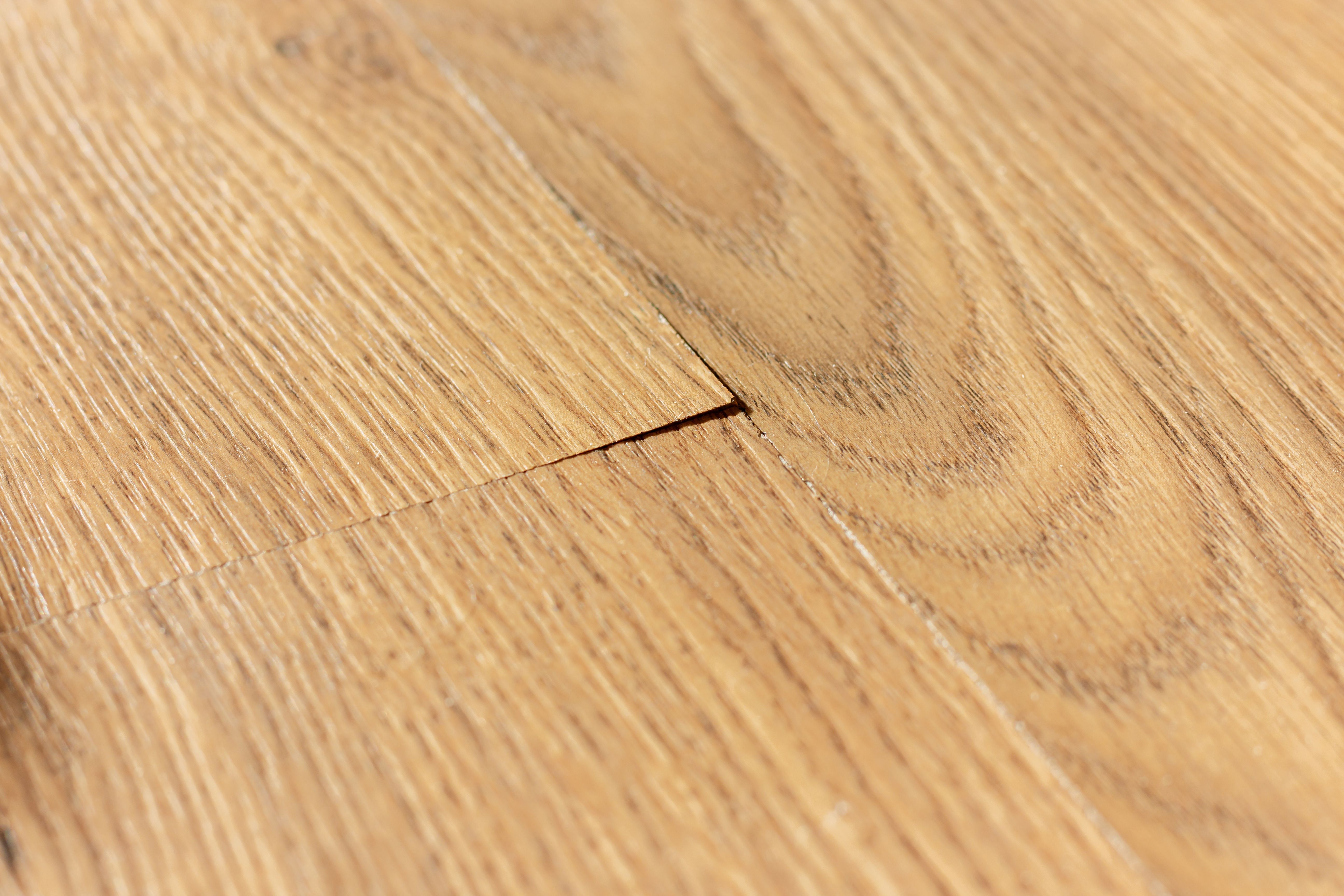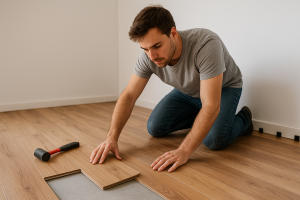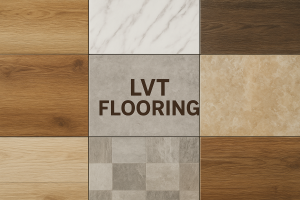
You shuffle into the lounge on a typical weekday morning, tea in hand, but something feels off. The laminate flooring doesn’t feel quite as sleek as it did. A couple of boards near the couch have developed a ridge, almost as though they’re trying to lift themselves up. Just enough to catch your sock.
You bend down, keeping that tea balanced like a pro, and attempt to press the laminate flat. It should work in theory, yet the floor stubbornly pops back up. It’s a familiar scene, and you are not lone – but what’s the deal?
Laminate flooring is supposed to be the easy, no-maintenance option, but when it starts to rise and buck, dubious thoughts can arise regarding your choice. It can feel like the end of the world. Does it all need lifted and replaced? Have I done something wrong? Has the flooring failed?
Before deciding on your course of action, you need to understand why laminate can lift, what part you may be playing in the drama, and how do you fix the problem before it gets worse – and you spill your tea.
Why laminate can lift
Laminate isn’t nailed down like hardwood flooring. In essence, laminate floats. And, much like a badly-behaved soufflé, floating surfaces need the right conditions to stay put. A bit like a human kneecap, but without the need for constant movement; even if the load bearing is the same.
When laminate starts to rise or buckle, it’s usually sending up a flare that something has gone wrong underneath. Typically, the biggest culprit remains moisture.
As laminate is crafted from compressed fibreboard with an icing of photographic film, the main layers are pervious to water ingress and trapped moisture. Surface spills aren’t really the problem, especially if you clean everything up quickly, but should there be a leak from your sink or general damp across the house, then the planks may swell, warp, and eventually lift.
However, another common issue stems from poor installation. If your fitter, or your overconfident DIY self, failed to leave expansion gaps around the perimeter, the boards have nowhere to expand when temperatures rise or humidity shifts.
Floors do expand with changes in temperature and humidity, and without breathing room, the pressure builds until the laminate buckles and lifts up in frustration.
Then there’s the matter of uneven subfloors. If your laminate flooring has been laid on a lumpy surface without the proper countermeasures, disaster is just around the corner. If the planks cannot sit flush, they will settle into the undulations over time and begin to push against each other, resulting in the dreaded lift. It’s how our planet’s tectonic plates cause earthquakes, meaning your floor has no chance of survival.
Add the quality question to that formula for another dimension of issues. The properties of bargain-basement laminate rarely permit structure, being too flimsy to withstand everyday wear and tear. If you opt for the cheapest option, don’t be surprised if those laminate flooring boards stage a rebellion within 12 months.
What you’re likely doing to cause or worsen the situation
The truth hurts, but chances are, you’ve had a hand in proceedings. That doesn’t mean it’s game over. Don’t take it too personally. Most of us are guilty of treating our floors with ignorance at best, abuse at worst.
For starters, you could be going overboard with the mopping and cleaning. It’s best to remember that laminate is not tile, and treating it like a wet-room floor amounts to cardinal sin. Drenching the laminate with water only hastens a quick demise.
Laminate appreciates nothing more than a nearly dry mop and a light touch, but many homeowners wield buckets and sopping cloths like medieval weapons, inadvertently sabotaging the very surface they’re trying to care for. Ignorance is not bliss this time round.
Then there’s the human tendency to ignore spills. Coffee, wine, pet slobber, your child yeeting milk across the room – leaving that on the floor for long enough basically guarantees enough damage is done for lifting to occur. The surface layer may shrug it off temporarily, but the joins between planks are vulnerable, and liquid always finds its way in. This is the indoor freeze-thaw effect.
Skipped the underlay to save time and cost? This is where you now pay the reaper. That thin foam layer beneath the boards isn’t a pointless upsell; it absorbs minor imperfections in the subfloor, acts as a moisture barrier, and helps the planks sit properly. Without it, you’ve essentially asked your floor to soldier on without protection.
Let’s not forget the furniture issue. Dragging heavy sideboards, tables and couches across the floor, instead of lifting them, creates stress points that can nudge planks out of alignment. It will start small, but repeated abuse will lift those boards like a climbing Airbus A380.
Finally, humidity neglect is a classic. Laminate is fussy when it comes to humidity. It likes balance. Put it in a stuffy, humid house with no ventilation, or conversely dry it out with endless central heating, and it reacts. And by reacts, I mean sulks by buckling.
Check this list off against your daily floor use for your main source of laminate issues.
How to Address the Problem
Ok, so now that we’ve mostly established the problem, what next? Well – before you start tearing the floor up in a feverish episode of anxious despair, take a measured approach.
Look closely at the lifted area. If the planks are swollen and spongy, it’s almost certainly water damage. If a single board is sticking up at the edges, the lack of an expansion gap is the likely culprit. Random bumps or ridges appearing in the middle of a room often point to an uneven subfloor.
If you suspect moisture, stop adding more. That means no more overzealous mopping or blasting steam-cleaners across the room. Instead, bring in fans, dehumidifiers, and towels to dry out the area as much as possible.
It’s also wise to check the expansion gaps. Remove skirting boards or trim around the perimeter and look for space between the floor and the wall. If there isn’t one, you’ve just diagnosed your problem.
Finally, if all else fails, check the subfloor itself. This is the messy bit. Pull up a section of boards and run your hand across the base. If it feels uneven or looks patchy, that’s your smoking gun.
Solutions to Fix Your Lifted Laminate
There’s no magic wand, but with patience and the right tools, you can salvage things, or - at the very least - prevent them getting worse.
Sadly, if water damage is to blame, then there’s bad news. Swollen and lifted laminate won’t shrink back into shape. Once the fibreboard has puffed up, it’s permanently ruined. The only fix is to replace the affected planks. If the damage is widespread, you may need to replace the entire floor.
When reinstalling, use a moisture barrier underlay, especially in spill-prone zones like kitchens, pantries, and bathrooms.
If the problem has been missing expansion gaps, things are a little rosier. By popping off the skirting boards and trimming the floor edges by 10–15mm, you can give the planks the breathing room they’ve been gasping for. Once you reinstall the skirting, the floor should relax back into place over time, although the worst affected planks may be permanently scarred. If you have some spare left over from the original installation, and those spares didn’t end up in the bin or being used elsewhere, then now might be the time to get them measured up and employed as a replacement.
An uneven subfloor is a tougher nut to crack. Unfortunately, the only proper solution is to pull up the laminate, level the subfloor with a self-levelling compound, and reinstall the boards. It’s messy, and it’s laborious, but it’s the only long-term fix.
If the issue boils down to poor installation overall (such as missing underlay, sloppy cuts and badly aligned joins), then a complete overhaul might be your best option. It’s not what you want to hear, but starting afresh is better than living with a nightmare floor.
What to understand
When laminate flooring lifts, it’s never just a cosmetic hiccup. Rarely is it a production issue or flaw with the laminate, either. It’s your floor screaming for help. Usually, it’s moisture, poor fitting, or a dodgy subfloor. Sometimes it’s your habits or lack of awareness. The fixes range from annoyingly fiddly to a financial requirement, but ignoring the problem only makes it worse.
For everyday prevention, keep the basics in mind. Control humidity, clean with a nearly dry mop, wipe spills immediately, and use furniture pads to protect the planks.
Taking the plunge with a new batch of laminate flooring? Don’t stress. We’ve got you covered. You don’t even need to worry about paying up front, courtesy of our excellent (your words, not ours) finance deal.












